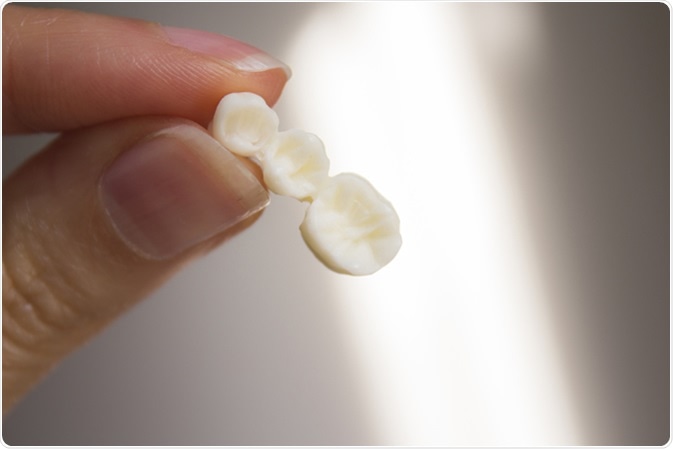The dental bridge procedure is a restorative dental treatment to replace missing teeth. The bridge fills the gap in the mouth between healthy teeth or dental implants on either side to restore both the function and appearance of teeth. The following article outlines the procedure for a dental bridge to be installed.

Assessment
The initial step in the dental bridge procedure is to assess the need for restorative dental treatment to replace missing teeth, and whether a dental bridge is the best option. Other restorative dental treatments that may be more appropriate in some cases include dental crowns and dental implants.
The dentist will usually examine the area and take X-rays of the jaw to gain a full understanding of the situation and make the best decision. It is important to discuss the possible options with the patients, including the type and design of the bridge, so that they can understand the advantages and disadvantages of each alternative.
First Appointment: Teeth Preparation and Temporary Bridge Placement
Most bridges rest on the healthy teeth either side of the gap, which are known as abutment teeth. In order to prepare these teeth for the placement of a dental bridge, it is necessary to shape them for the bridge which is to be fitted. Local anesthetic is used to ensure patient comfort throughout this procedure.
The first step is to file the abutment teeth into an appropriate shape for the bridge to be placed. Impressions of the shaped teeth are then made and sent to a dental laboratory for the construction of the bridge. The prosthetics should be closely matched in color to the surrounding natural teeth for aesthetic purposes, so a sample color should be taken at this point.
In some cases, a dental implant may be needed to anchor the bridge, particularly if the teeth on either side of the gap are not strong enough to support the bridge by themselves.
Some patients may be fitted with a temporary bridge, which is typically made out of filling material and functions to protect the shaped teeth from damage while the permanent bridge is being constructed. This can later be removed when the permanent bridge is ready to be placed in the mouth.
Second Appointment: Permanent Bridge Placement
The second appointment in the dental bridge procedure may take place as soon as the unique appliance has been made and is ready to be placed. Once again, local anesthetic is usually applied at the beginning of this appointment to increase patient comfort.
Before the permanent dental bridge can be placed, the temporary one should be removed and, if necessary, the underlying teeth cleaned. Dental cement can then be used to fix the dental bridge in place on the abutment teeth.
The results can then be seen and the patient can experience what it feels like on biting the teeth together gently. While it should be expected that the bridge feels unfamiliar at first, this usually wears off quickly. There may be need for a few final adjustments to the bridge in some cases.
Follow Up
Aftercare and follow up is very important in the dental bridge procedure to ensure that the patient knows what to expect and understands how to care for their new dental bridge. For this reason, the dentist should take some time to explain the particulars of the dental bridge, including the recommended oral care and when to seek dental advice. With recommended maintenance, a dental bridge often lasts longer than ten years.
References
- http://dentalcarematters.com/dental-bridge-procedure/
- https://www.healthdirect.gov.au/dental-bridge-procedure
- http://www.colgate.com/en/us/oc/oral-health/cosmetic-dentistry/bridges-and-crowns/article/bridges
- http://www.yourdentistryguide.com/bridges/
Further Reading
- All Dental Bridge Content
- What is a Dental Bridge?
- Types of Dental Bridges
- Dental Bridges – Advantages and Disadvantages
- Uses for a Dental Bridge
Last Updated: Feb 26, 2019

Written by
Yolanda Smith
Yolanda graduated with a Bachelor of Pharmacy at the University of South Australia and has experience working in both Australia and Italy. She is passionate about how medicine, diet and lifestyle affect our health and enjoys helping people understand this. In her spare time she loves to explore the world and learn about new cultures and languages.
Source: Read Full Article
